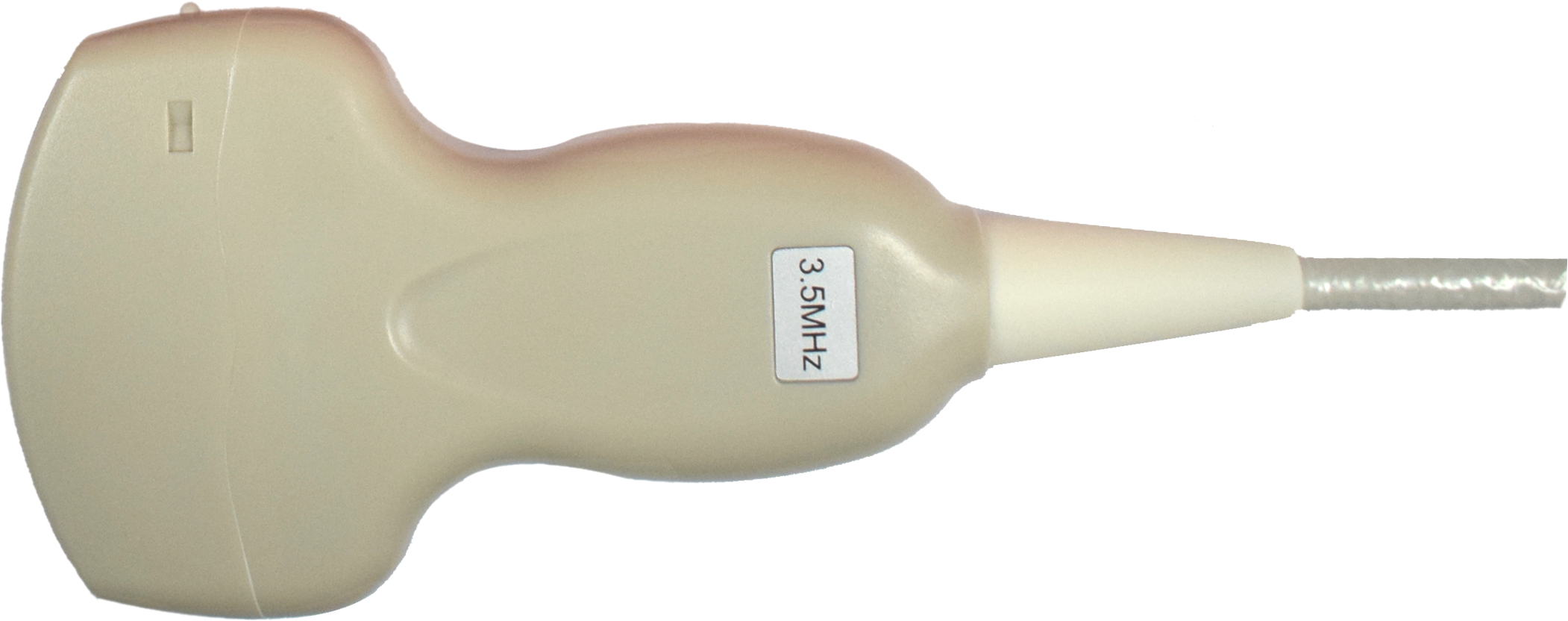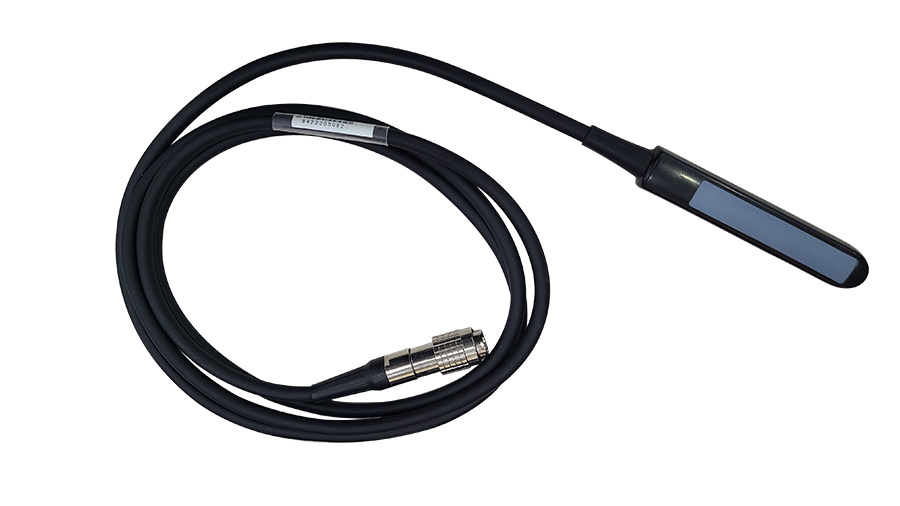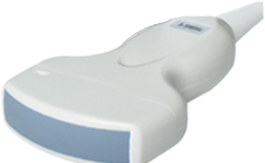Introduction to Veterinary ultrasound Probes

Veterinary ultrasound probes are essential components of ultrasound systems used to examine the internal organs, tissues, and blood flow in animals. Also known as transducers, these devices emit sound waves that penetrate the animal’s body, creating real-time images for diagnostic purposes. Veterinary ultrasound probes come in various types and sizes, each designed for specific diagnostic applications, species, and body regions. Choosing the right probe is crucial for obtaining accurate imaging results and ensuring the best care for animals.
In this guide, we’ll explore the different types of veterinary ultrasound probes, their uses, and how to choose the right one for your veterinary practice.
Types of Veterinary Ultrasound Probes
Veterinary ultrasound probes come in several different types, each optimized for specific applications in animal care. Understanding the different types will help veterinarians select the best option for their diagnostic needs.

1. Linear Probes
Linear probes are designed to produce high-resolution images of shallow structures. These probes emit sound waves in a straight line, making them ideal for imaging superficial organs, such as tendons, muscles, and blood vessels. Linear probes are commonly used in small animal practices and equine medicine for musculoskeletal imaging, as well as in abdominal and reproductive exams.
Frequency Range: Typically between 5-12 MHz.
Applications: Tendons, ligaments, skin, and superficial organs in small animals and horses.

2. Convex (Curved) Probes
Convex probes, also known as curved probes, emit sound waves in a curved pattern, allowing for deeper penetration into the body. This makes them ideal for imaging large, deep structures such as abdominal organs and for pregnancy monitoring in both small and large animals. Convex probes are frequently used in general practice and for abdominal scans in dogs, cats, livestock, and horses.
Frequency Range: Usually between 2-7 MHz.
Applications: Abdominal imaging, pregnancy diagnosis, and large organ scans.
3. Microconvex Probes
Microconvex probes are smaller versions of convex probes, featuring a more compact footprint. They are particularly useful for imaging small animals or hard-to-reach areas where larger probes cannot fit. Their smaller size allows for better access and detailed imaging of small organs or body parts, such as the thoracic region in cats and small dogs.
Frequency Range: Typically between 5-8 MHz.
Applications: Abdominal, cardiac, and thoracic imaging in small animals.
4. Phased Array Probes
Phased array probes emit sound waves in multiple directions to produce highly detailed images of deeper structures. They are often used in cardiac imaging to assess heart function and blood flow in animals. These probes are invaluable for echocardiograms, making them a crucial tool for diagnosing heart disease in both small and large animals.
Frequency Range: Between 2-5 MHz.
Applications: Cardiac imaging, echocardiograms, and vascular assessments.
5. Endocavitary Probes
Endocavitary probes are designed for internal imaging, such as rectal or vaginal exams. These probes are typically used in reproductive medicine for pregnancy checks and fertility assessments in larger animals like cattle and horses. They are also valuable for internal pelvic exams in small animals.
Frequency Range: Between 4-8 MHz.
Applications: Reproductive exams, pregnancy monitoring, and internal pelvic assessments.
Key Factors to Consider When Choosing Veterinary Ultrasound Probes
Selecting the right veterinary ultrasound probe is crucial for accurate imaging and diagnostics. Consider the following factors when choosing the best probe for your practice:
1. Frequency
The frequency of an ultrasound probe directly affects image quality and depth of penetration. Higher-frequency probes (above 7 MHz) provide better resolution for shallow structures, while lower-frequency probes (below 5 MHz) offer deeper penetration but lower resolution. It’s essential to choose a probe with the appropriate frequency range based on the size of the animal and the area being examined.
2. Species and Size of the Animal
Different probes are optimized for specific animal sizes and species. For example, microconvex probes are better suited for small animals like cats and small dogs, while convex or linear probes are ideal for larger animals like horses, cattle, and larger breeds of dogs.
3. Imaging Application
The type of diagnostic imaging you need to perform will determine the best probe type. For musculoskeletal exams, a high-frequency linear probe is ideal, while deeper abdominal imaging requires a convex or microconvex probe. For cardiac exams, a phased array probe is the preferred choice.
4. Compatibility with ultrasound machines
Ensure that the ultrasound probe is compatible with your veterinary ultrasound machine. Most manufacturers produce probes specifically designed for their machines, but some probes may be compatible across multiple brands.
5. Durability and Cleaning
Veterinary probes need to be durable and easy to clean, especially when used in busy clinics or outdoor environments. Consider investing in probes that are waterproof, resistant to wear and tear, and easy to disinfect after each use.
Applications of Veterinary Ultrasound Probes
Veterinary ultrasound probes are used across a wide range of applications, including:
1. Abdominal Imaging
Abdominal ultrasound is one of the most common applications for veterinary probes. Convex and microconvex probes are often used to evaluate the liver, kidneys, bladder, and intestines in animals, allowing veterinarians to diagnose issues such as tumors, kidney disease, or gastrointestinal blockages.
2. Pregnancy and Reproductive Health
Ultrasound is the gold standard for pregnancy diagnosis in both small and large animals. Endocavitary and convex probes are commonly used for pregnancy monitoring, reproductive health checks, and fertility assessments. These probes provide clear images of the developing fetus and help detect complications early.
3. Cardiac Assessments
Phased array probes are vital for performing echocardiograms, which assess the function of the heart and diagnose conditions such as heart disease and valve issues. These probes allow veterinarians to evaluate heart structure, blood flow, and overall cardiac health in real-time.
4. Musculoskeletal Imaging
Veterinary ultrasound is also used for evaluating tendons, ligaments, and muscles in animals, particularly in equine medicine. Linear probes are ideal for musculoskeletal exams, helping veterinarians detect injuries, inflammation, and other issues affecting mobility.
5. Vascular Imaging
Doppler ultrasound probes are used to assess blood flow and circulation in animals. These specialized probes help veterinarians detect blood clots, monitor blood vessel function, and assess vascular health in critical cases.
Leading Brands of Veterinary Ultrasound Probes
Several manufacturers produce high-quality veterinary ultrasound probes, known for their accuracy and durability. bxl brands include:
Mindray: Offers a wide range of probes designed for different veterinary applications, including linear, convex, and phased array probes.
1.Bxl brands probes: Known for its portable ultrasound systems, SonoSite produces durable, high-performance probes suitable for fieldwork and clinical use.
2.Bxl brands: Provides a variety of advanced ultrasound probes, particularly for cardiac and abdominal imaging.
3Bxl brands: Specializes in veterinary-specific ultrasound equipment and probes, offering versatile options for different species and applications.
Conclusion
Veterinary ultrasound probes are crucial tools in diagnostic imaging, helping veterinarians perform detailed exams and diagnose conditions accurately. Understanding the different types of probes, their applications, and how to select the right one for your practice can improve the quality of care you provide to animals. Whether you need a probe for abdominal scans, cardiac assessments, or pregnancy monitoring, choosing the correct probe is essential for obtaining clear, accurate images that lead to better outcomes.
FAQs
What is the difference between linear and convex probes? Linear probes produce high-resolution images of shallow structures, while convex probes are designed for deeper imaging of larger organs and structures.
How do I choose the right ultrasound probe for my practice? Consider the species and size of the animal, the type of exam you’re performing, and the frequency of the probe. For example, a linear probe is ideal for musculoskeletal imaging, while a convex probe works well for abdominal exams.
Can probes be used across different ultrasound machines? Some probes are compatible with multiple brands, but it’s important to check compatibility with your specific ultrasound machine to ensure proper functionality.
By selecting the right veterinary ultrasound probe, veterinarians can enhance diagnostic precision and provide better care for their patients, whether they are small pets, livestock, or exotic animals.
tags: Veterinary Ultrasound ProbesVeterinary Ultrasound


